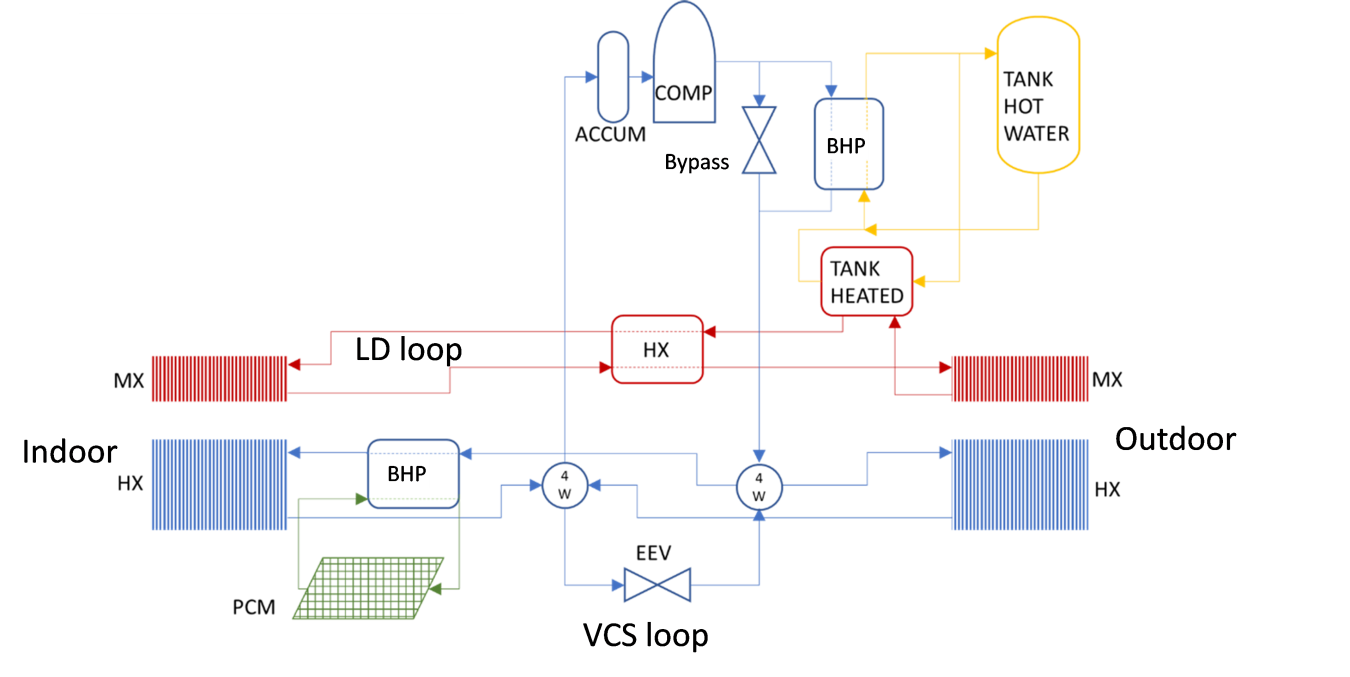Lead Performer: Oak Ridge National Laboratory – Oak Ridge, TN; partner(s): Emerson – St. Louis, MO
April 5, 2023
Lead Performer: Oak Ridge National Laboratory – Oak Ridge, TN
Partner: Emerson – St. Louis, MO
DOE Total Funding: $350,000
Cost Share: $350,000
Project Term: October 2021 – September 2023
Funding Type: Cooperative Research and Development Agreement – 2021 Lab Call
Project Objective
Heat pumps are an alternative to conventional air and water heating and cooling technology that can reduce a home’s energy use by up to 40% and use no fossil fuels. Heat pumps also integrate well with thermal energy storage technology, which reduces peak loads on the electrical grid by storing energy in the form of heat for later use. This project will develop a 1.25 ton packaged vertical integrated heat pump (IHP) coupled with a liquid desiccant dehumidification system. The heat pump is capable of space cooling, space heating, water heating, and chilled water production, and can store thermal energy from air exiting the condenser.
Particularly, this IHP will be combined with an innovative two-stream liquid desiccant (LD) system for dehumidification and latent energy storage. The LD system removes moisture from the supply air and uses the condenser exit air (waste) for regeneration, utilizing the relative humidity differential. Low cost CaCl2 will work as the LD, which is subject to crystallization. The hot water loop of the IHP will provide heat source to melt the salt and maintain the LD temperature above the crystallization temperature. And a LD tank will store high concentration LD for latent energy storage.
This will provide an optimum solution for decarbonation and grid-responsive building energy management. It will maximize use of renewable energy via using the hydronic loop for sensible energy storage in building envelope and latent energy storage via liquid desiccant.
Project Impact
This heat pump can help decarbonize the building sector, save energy, and reduce peak grid loads due to its thermal energy storage capabilities. About 40% of total U.S. primary energy is consumed by buildings, 57% of that by space heating, ventilation, and air-conditioning (HVAC) and water heating (WH) equipment. Building equipment, particularly electric heat pumps (HP), can serve as an infinite reservoir, enabling distributed resource integration and new nontraditional energy storage technologies to shift peak load and increase energy efficiency. Electric heat pumps, integrated with energy storage functions, will play a key role in meeting the decarbonization goal by 2035.
The concept of a packaged IHP with enhanced thermal storage and liquid desiccant latent storage can be applied to all U.S. climate zones by correctly sizing the components and adjusting the controls accordingly. The IHPs are compact and can serve multifamily buildings and residential homes. They can be used for retrofits as well as new constructions. The ability to control humidity year-round would improve the health of the buildings and their occupants including the potential to reduce the growth rate of some viruses. Additionally, we will use the system concept to add the capability to shift at least 25% of energy consumption at grid requests through the application of building envelope sensible energy storage, and LD latent energy storage.
Contacts
DOE Technology Manager: Sven Mumme
Lead Performer: Bo Shen, Oak Ridge National Laboratory

